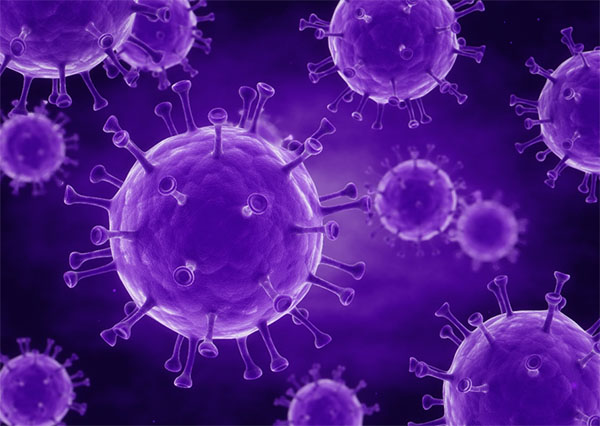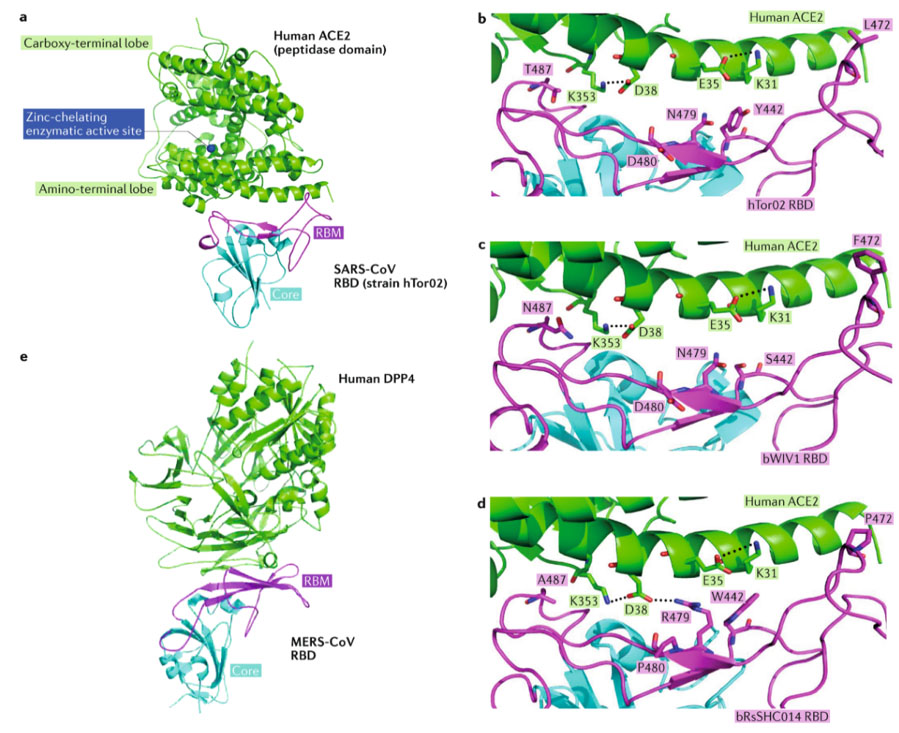Coronavirus Service Platform
The 2019 novel coronavirus 2019 (COVID-19) is a coronavirus that is first identified in lower respiratory tract samples of patients with pneumonia in Wuhan, Hubei, China. The outbreak of pneumonia caused by the COVID-19 was first occurred in Wuhan, China in December 2019, and then COVID-19 infection quickly broke out in China and spread to many countries including the United States. Profacgen provides a number of services related to coronavirus, including protein expression services, protein interaction analysis services,enzyme activity assay, computational protein analysis and virtual screening. Our expert team with rich technical experience of viral protein scan offer high-quality and efficient technical services, and provide customers with reliable assistance in the research of viral proteins.
 Figure 1. Coronavirus.
Figure 1. Coronavirus.
COVID-19 infection may cause severe symptoms of acute respiratory infections and even develop into acute respiratory distress syndrome (ARDS), present a significant threat to human life. This is not the first occurred large-scale pneumonia outbreak caused by the coronaviruses. Severe acute respiratory syndrome coronavirus (SARS-CoV) and Middle East respiratory syndrome coronavirus (MERS-CoV) are both highly pathogenic human coronaviruses. SARS-CoV infected a total of 8,400 people during the epidemic in 2002-2003, of which the total mortality rate is 9.6%. MERS-CoV was first discovered in 2012, causing large-scale outbreaks of Middle East respiratory syndrome in the Middle East and South Korea in 2012 and 2015, respectively, with a total mortality rate higher than SARS-CoV infection.
 Figure2. Receptor recognition by SARS-CoV and MERS-CoV.(Cui,et al.2018)
Figure2. Receptor recognition by SARS-CoV and MERS-CoV.(Cui,et al.2018)
Coronaviruses as members of the subfamily Coronavirinae belong to the virus family Coronaviridae, which is the largest enveloped positive-sense RNA viruses. The subfamily Coronavirinae can be divided into four genera according to its genomic structure and their phylogenetic relationships, which are Alphacoronavirus, Betacoronavirus, Gammacoronavirus and Deltacoronavirus. The former two only infect mammals, while the latter two infect birds, however, some Gammacoronavirus and Deltacoronavirus also infect mammals. Coronaviruses can infect both humans and a variety of vertebrates, and coronaviruses that infect humans can be classified into lowpathogenic hCoVs and highpathogenic hCoVs. Lowpathogenic hCoVs include HCoV-229E, HCoV-OC43, HCoV-NL63 and HCoV-HKU, which generally infect the upper respiratory tract and cause seasonal mild to moderate cold-like respiratory diseases. High pathogenic hCoVs discovered before 2019 include SARS-CoV and MERS-CoV, which generally infect the lower respiratory tract and cause severe pneumonia, and even cause acute lung injury (ALI) and ARDS, therefore high pathogenic hCoVs endanger human life and cause major threats to public health. Researches show that the natural host of SARS-CoV is bats, which are transmitted to humans through the intermediate host palm civets. The receptor for SARS-CoV is angiotensin-converting enzyme 2 (ACE2), and it mainly infects ciliated bronchial epithelial cells and type II pneumocytes. The natural host of MERS-CoV is also bats, but its intermediate host is unimodal camels. Besides, its receptor is dipeptidyl peptidase 4 (DPP4) and mainly infects unciliated bronchial epithelial cells and type II pneumocytes.
Coronavirus-related research is of great significance in the fields of public health and epidemiology. The viral protein-related services offered by Profacgen, such as protein expression services, protein interaction analysis services, enzyme activity assay, computational protein analysis and virtual screening can satisfy your different needs in the research about coronavirus. Our professional and high-quality technical services are committed to helping you further your research in coronavirus, if you are seeking technical services related to coronavirus proteins, Profacgen may be your ideal choice, welcome to contact us.
Reference:
- Cui, J.;et al. Origin and evolution of pathogenic coronaviruses. Nature Reviews Microbiology. 2018, 17 (3): 181-192.
- Channappanavar, R.; Perlman, S. Pathogenic human coronavirus infections: causes and consequences of cytokine storm and immunopathology. Seminars in Immunopathology. 2017,39 (5): 529-539.